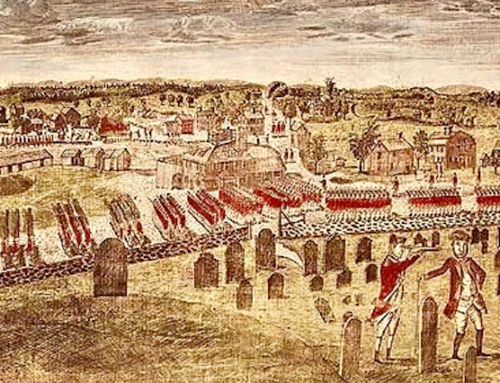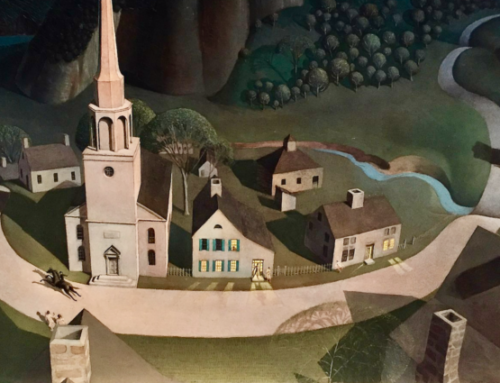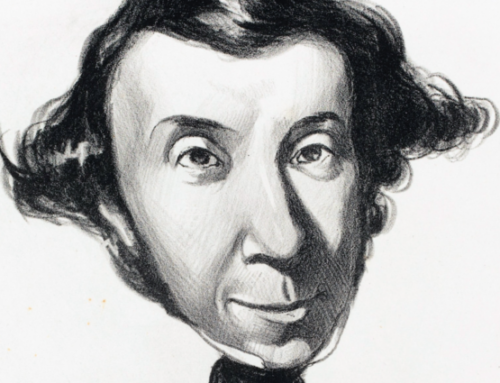“The Murders in the Rue Morgue” is thematically applicable to much of Poe’s work—the struggle to see the light of truth and justice that shines at the end of a dark tunnel of violence and horror.
The year was 1849.
There had been no trace of Mr. Poe for six days since he left Richmond, Virginia, on September 27th to travel back to his home in New York. His luggage was discovered at a Richmond tavern. Then, on the morning of October 3rd, he was found lying in a Baltimore gutter in great distress—beaten, delirious, and wearing clothes that were not his own. Edgar Allan Poe died four days later without recovering coherency. The cause of death remains disputed, involving theories that range from malady to murder. His last words were, “Lord, help my poor soul.” But that soul was lifted—nevermore!
The mysterious death of Edgar Allan Poe has perplexed a world of detectives, which is morbidly fitting since Poe’s genius gave the world detectives. Poe is the father of the original detective story, The Murders in the Rue Morgue—and a better ancestor a genre of grotesqueries could not desire. Though The Murders in the Rue Morgue is the first to tread a path now so well trod, it stands at no disadvantage even by current standards. In all the horrifying and mystifying crime scenes ever conceived, the ghastliest would be hard pressed to eclipse what was found in the house in the Rue Morgue, Paris.
After being aroused at three o’clock in the morning by a series of shrieks, the neighbors forced their way into a fourth story chamber, all the doors and windows being locked from the inside. The room had been violently overturned and rifled, but nothing was stolen—not even the four thousand francs in gold scattered across the floor. Blood was spattered everywhere and a gory razor lay upon a chair. In the courtyard far below was found the body of an old woman—decapitated. Finally, the coup de grâce, the body of a young woman was also found—stuffed up the chimney, head downwards. The “Gazette des Tribunaux” summed it up well enough with this evening edition headline:
Extraordinary Murders
This headline arrested the attention of one of the most significant literary creations in history: Monsieur C. Auguste Dupin. Dupin is the father of Mr. Sherlock Holmes, the grandfather of Lord Peter Wimsey, the great grandfather of M. Hercule Poirot, and so his descendants run. Dupin is the first detective—the first of a beloved type: The eccentric genius who uses his powers of observation and deduction to beat the bumbling police at their own game; chronicled by a less-perceptive though loyal companion; and possessed with a taste for dramatic, eleventh-hour exposés. With Dupin and his brilliant unraveling of the mystery of the Rue Morgue, a pattern was created that humanity has not grown tired of yet and never will. The great analytical method of ratiocination founded by Poe and made famous by Conan Doyle is a joy even on its maiden voyage. Perhaps it is even more so, because it is always a particular pleasure to discover the peculiar origin of a standard phenomenon.
The Murders in the Rue Morgue is thematically applicable to much of Poe’s work—the struggle to see the light of truth and justice that shines at the end of a dark tunnel of violence and horror. This struggle dominates Poe’s tales of mystery, madness, and the macabre because it dominated his own tortured existence. Poe, for all his ugliness, believed in beauty; but he believed that beauty required a battle before it might be beheld. And those battles were not always won.
D. H. Lawrence once said that Mr. Poe was “doomed to seethe down his soul in a great continuous convulsion of disintegration, and doomed to register the process.” This statement drives at the significance of Edgar Allan Poe’s influence and unique literary contribution, though his writings are often dismissed as mere sensationalism, or modern gothic sideshows. Henry James, in the vein of such criticism, said: “an enthusiasm for Poe is the mark of a decidedly primitive stage of reflection.” The primitive stage, however, is an integral part of the human experience, both historically and individually, and does not deserve to be brushed aside. Everyone passes through a stage of adolescence—a stage of darker bents, psychological tempests, and self-doubt.
As childhood is doffed and the dark mantle of young adulthood is donned, perceptions shift to realms of solitude where truth has been somehow lost. The adolescent feels suddenly estranged, and often filled with longings for an immortal good that has not yet been reached. Beauty becomes inaccessible—the subject of impossible dreams and desires. The skies are shrouded by horror and the soul strangled by terror. This is the world of Edgar Allan Poe, and it is a world everyone must conquer.
Edgar Allan Poe’s “great continuous convulsion” speaks very naturally and very intensely to the adolescent spirit: passion, love, hatred, murder, primal desires and fears, a desperate pursuit for meaning in a corrupt world. The tales of Edgar Allan Poe capture a universal adolescent essence, and few things deserve to be taken as seriously as adolescence. Adolescence is a search. Adulthood is dealing with the discovery.
Poe’s tales, grim and brutal though they often are, provide an occasion to cope with the contradictions of the mind—so characteristic of adolescence—as it moves toward contemplation of metaphysical mysteries. Stories such as The Tell-Tale Heart and The Black Cat, poems like “Annabel Lee” and “The Raven” offer what T. S. Eliot called the objective correlative: a criterion to identify and objectify the experience of stirrings that are often too profound to bear. There is a dark side to our nature, and one way to defeat it is to face it. In this way, the tales of Poe afford an Aristotelian catharsis, giving form, meaning, and outlet to things that are naturally grappled with. Such experiences, jarring though they may be, can be therapeutic.
There arises in adolescents an added appetite for principles as well as for pleasures, and this is a quality to be retained. Adolescence teaches us to be both turned in on ourselves and observant of things. This double preoccupation is the effort to discover who we are and how we fit into our surroundings, deciphering the pit from the pendulum. The phantasms of Edgar Allan Poe’s imagination are potent material for such reflections, for his stories wrestle with who we are as human beings, engaged in the seemingly irreconcilable problem of evil. Poe, whether through M. Dupin or any other of his vast category of characters, is a guide to find that one, elusive end that will hold life together and be meaningful forevermore.
In the words of Sir Arthur Conan Doyle, spoken on March 1, 1909, in honor of the centenary of Poe’s birth: “…his tales were one of the great landmarks and starting points in the literature of the last century… For those tales have been so pregnant with suggestion, so stimulating to the minds of others, that it may be said of many of them that each is a root from which a whole literature has developed.”
This essay was first published here in October 2015.
Republished with gracious permission of Crisis Magazine (May 2013).
Imaginative Conservative applies the principle of appreciation to the discussion of culture and politics—we approach dialogue with magnanimity rather than with mere civility. Will you help us remain a refreshing oasis in the increasingly contentious arena of modern discourse? Please consider donating now.
The featured image is courtesy of Pixabay.








Excellent analysis. What you say of Poe’s remarkable work is also true of much science fiction and fantasy, which is all too often dismissed as juvenile and lowbrow, but in fact provides entertaining and insightful treatment of universal subjects.
This passage on Edgar Allan Poe and his contributions to literature is truly captivating. The way that Poe’s life and struggles are intertwined with his writing is truly remarkable, and it’s clear that his work has had a profound impact on the detective and horror genres.
I appreciate how the author highlights the importance of Poe’s writing, even though it may be dismissed by some as mere sensationalism. The struggles and conflicts that Poe’s characters face are relatable to all, especially during the difficult and tumultuous periods of life.